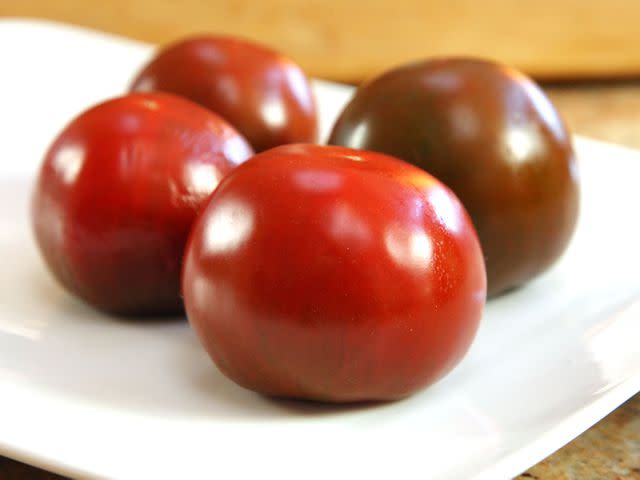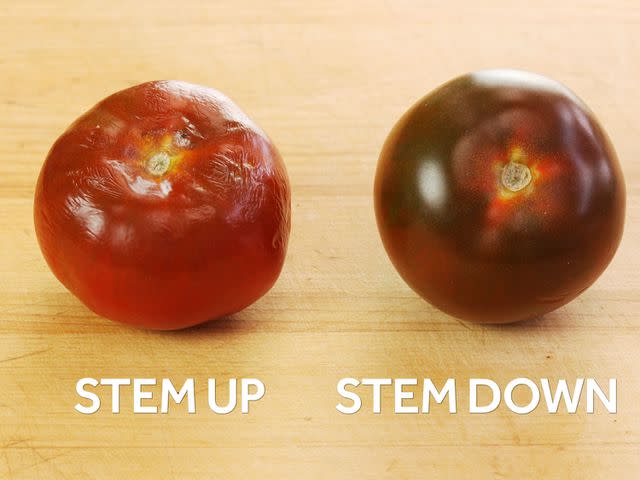Want Juicier Tomatoes? Store Them Upside Down
Which position you store tomatoes makes a big difference when it comes to moisture loss.
Another summer, another article about how to properly store tomatoes. That's how it feels to me, anyhow. I get it, though. I love fresh-from-the-vine summer tomatoes almost more than any other food I can think of, and when I come home with a big haul from the farmers market, I'd like those tomatoes to be at peak flavor and texture for the whole week, until I can replenish them.

Serious Eats / J. Kenji López-Alt
Through extensive research and testing, we already know with fully ripe tomatoes you intend to eat a few days down the line, the refrigerator is a better storage option than room temperature (so long as you let them come to room temperature before serving). But did you know that the position in which you store those tomatoes can also have an impact?
How Tomatoes Lose Moisture
See, tomato skins are really good at keeping tomato juices inside the tomato, but they have one defect: Moisture can escape from the tops, where tomatoes were attached to the vine. This moisture loss can cause a plump tomato to turn soft and wrinkly. But don't worry—there's an easy way to fix that problem. All you have to do is remove any excess vine from the tomato, then store the tomato on a flat surface, like a plate, with the vine side down. This effectively seals off that defect, helping the tomato retain all its juiciness.
Take a quick look:

Serious Eats / J. Kenji López-Alt
These tomatoes were picked at the same time and stored in the same conditions for three days. The one on the left was stored stem side up, while the one on the right was stored stem side down. As you can see, the stem-down tomato remained plump and juicy, while the stem-up tomato started to wrinkle. I repeated this experiment with dozens of tomatoes, stored both at room temperature and in the refrigerator, with the exact same results every time.
Preventing Moisture Loss
So how do we know what mechanism is at work here? How do we know that moisture loss through the stem is the culprit? Well, I performed two more tests to try to corroborate the theory.
The first was to cover up the stem stump with a little piece of tape. If moisture loss were the culprit, then creating a barrier with a piece of tape should keep those tomatoes plump and juicy, no matter what position they were stored in. As expected, the taped-up tomatoes stayed plump even when stored stem up.
The first time I performed this experiment, when I was a test cook at Cook's Illustrated, I repeated it with three dozen pairs of tomatoes and got the exact same results every time.
The second test was simple: I weighed the tomatoes before and after resting to account for relative moisture loss. Tomatoes stored stem down for three days lost between 1 and 2% of their weight, while those stored stem up lost up to 7%!
Long story short: Remove the stems from your tomatoes and store them stem side down on a flat plate. If they are very ripe and you're going to be eating them within a day or two, keep them at room temperature. If you're planning to eat them later in the week, store them in the fridge, and let them come back to room temperature before serving.
June 2017
Read More
Read the original article on Serious Eats.

